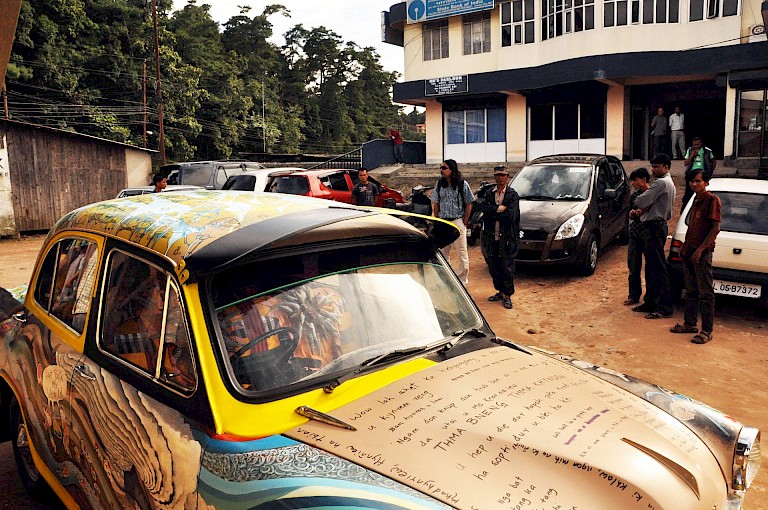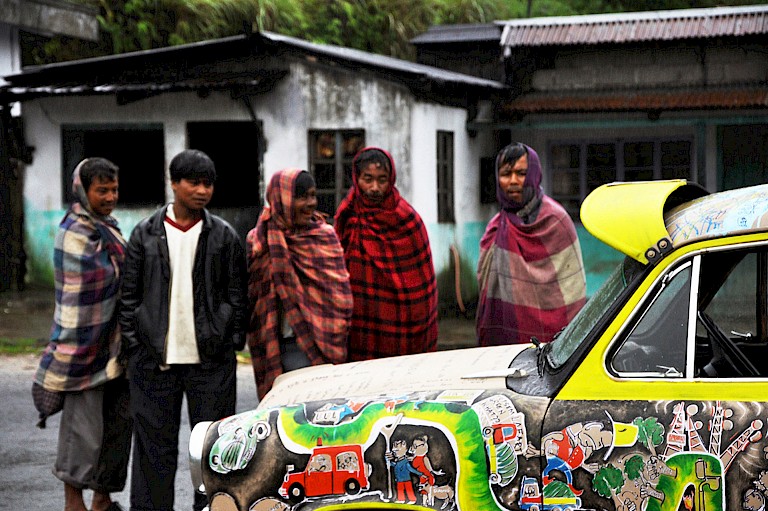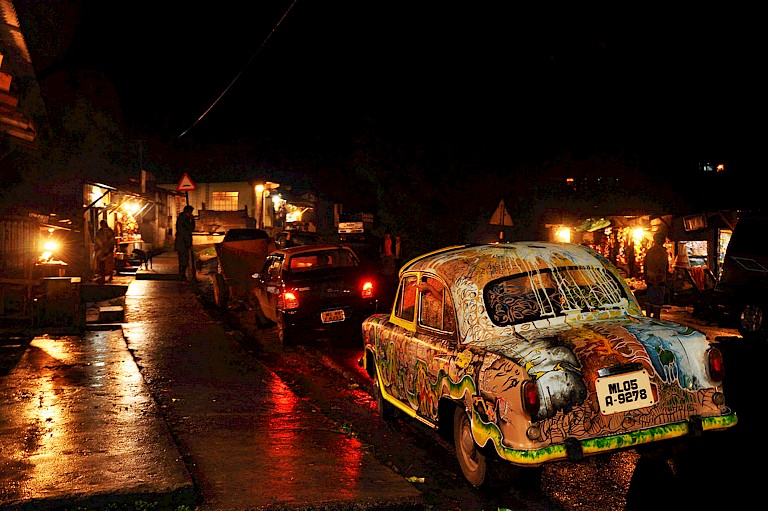



“Intermarriage, as well as trade and commerce with outside communities, has always shaped our identity,” says Diengdoh. “And since the 1970s, Shillong has witnessed repeated bouts of racial turmoil.” This turmoil, he continues, exists not only between the various cultures who share the state, but also within various factions of the Khasi. In rural areas, more traditional tribalists rail against “outsiders,” while various political interests exploit these divisions for personal gain.
The Kali Kamai represent one of the very few public spaces that force these disparate groups into close—often extremely close—proximity. “These taxis ply their trade all over Shillong, ferrying people around for a relatively small fee,” explains Diengdoh. “Made to seat five passengers (including the driver), they are usually stuffed with eight to nine people, all squeezed in with little regard for age, gender, race or class—a perfect microcosm where any and all social divisions are forcibly blurred.”
For the artist, who was born and raised in Shillong, the Kali Kamai presented a curious social space where normal standards of behavior became challenged. “I find it extremely interesting to see how people behave in these spaces—the body language, verbal exchanges, and interactions that take place,” he explains. “In these spaces, class boundaries are blurred and the fear of the unwanted outsider becomes irrelevant as people have no choice but to interact.”
Diengdoh initially planned an audio project consisting of recorded conversations taken from within Kali Kamai replayed at some other location. As he explored the project, he expanded it to become a mobile, interactive Kali Kamai.
In doing so, Diengdoh obtained an automobile and altered it to become a traveling exhibition—as well as a functioning taxicab. Artists painted traditional Khasi oral histories on the exterior of the car, while inside a variety of interactive elements were deployed including a touch-screen computer that displayed scenes from both present-day and historic Shillong, and a soundtrack that mixed music with recorded conversations from other Kali Kamai and found-sound from radio broadcasts of the 1970s and 1980s. Instead of collecting a fare, the driver gave out kwai, a traditional snack of betel nut with paan leaf that is universally seen as a gesture of welcome.
According to the artist, the project was the first public art installation in the Shillong region—and it was also a creative and interesting expression of creative placemaking. Diengdoh’s intervention addressed real-life issues of substance that impact the daily lives of participants. At the same time, the piece makes ingenious use of a site-specific resource, repurposing the familiar in a way that causes participants to question their own assumptions.
All copyright belongs to Shanghai Academy of Fine Arts, Shanghai University.



